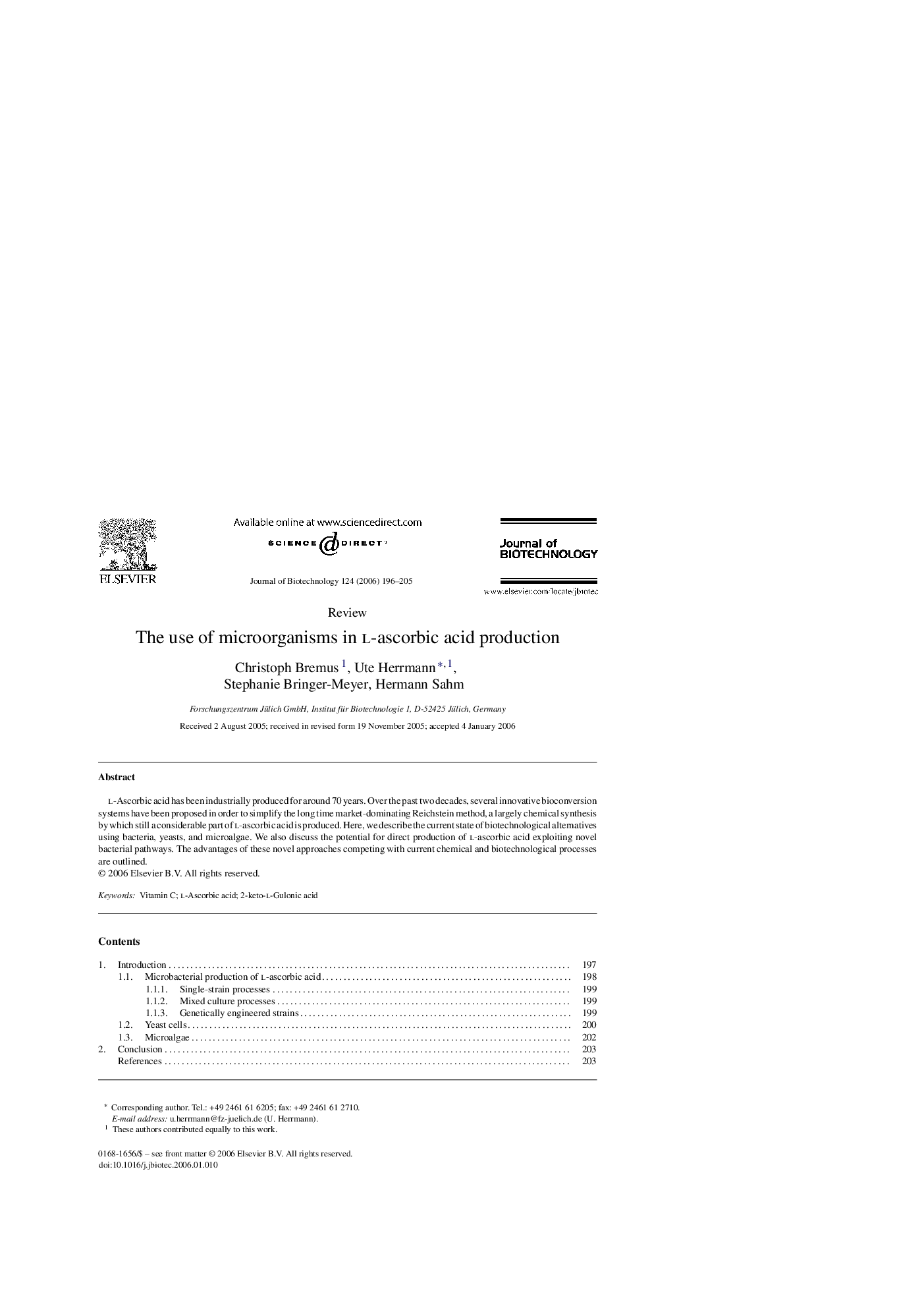| Article ID | Journal | Published Year | Pages | File Type |
|---|---|---|---|---|
| 25448 | Journal of Biotechnology | 2006 | 10 Pages |
Abstract
l-Ascorbic acid has been industrially produced for around 70 years. Over the past two decades, several innovative bioconversion systems have been proposed in order to simplify the long time market-dominating Reichstein method, a largely chemical synthesis by which still a considerable part of l-ascorbic acid is produced. Here, we describe the current state of biotechnological alternatives using bacteria, yeasts, and microalgae. We also discuss the potential for direct production of l-ascorbic acid exploiting novel bacterial pathways. The advantages of these novel approaches competing with current chemical and biotechnological processes are outlined.
Related Topics
Physical Sciences and Engineering
Chemical Engineering
Bioengineering
Authors
Christoph Bremus, Ute Herrmann, Stephanie Bringer-Meyer, Hermann Sahm,
